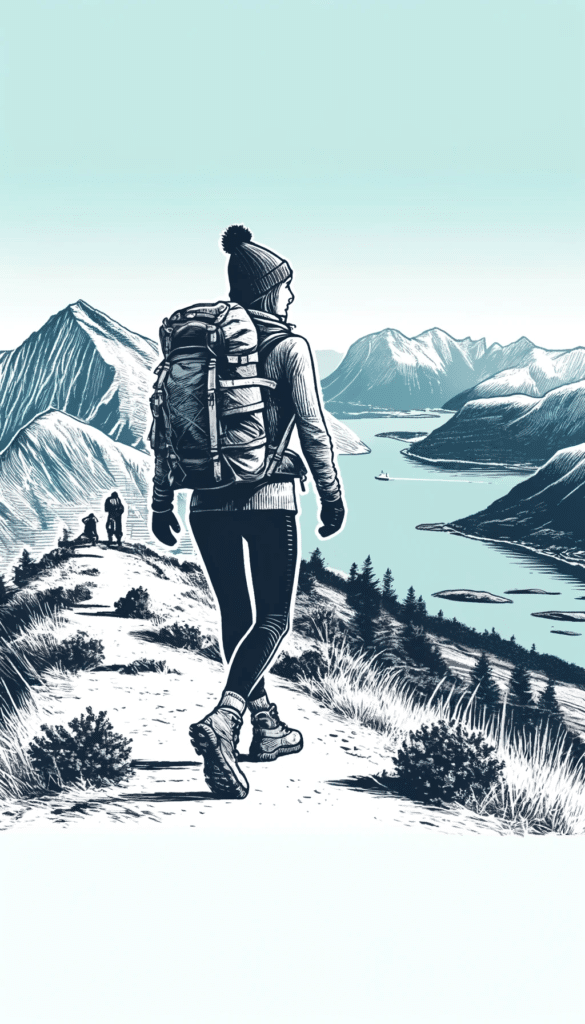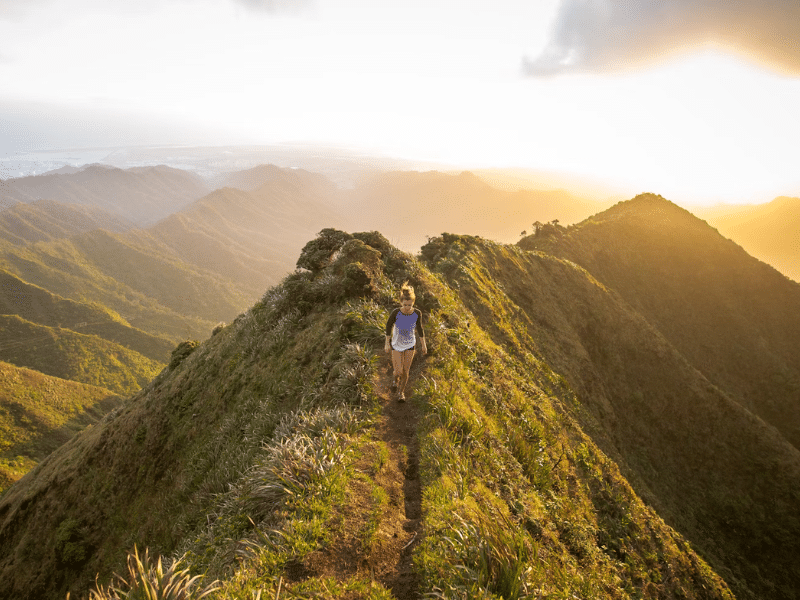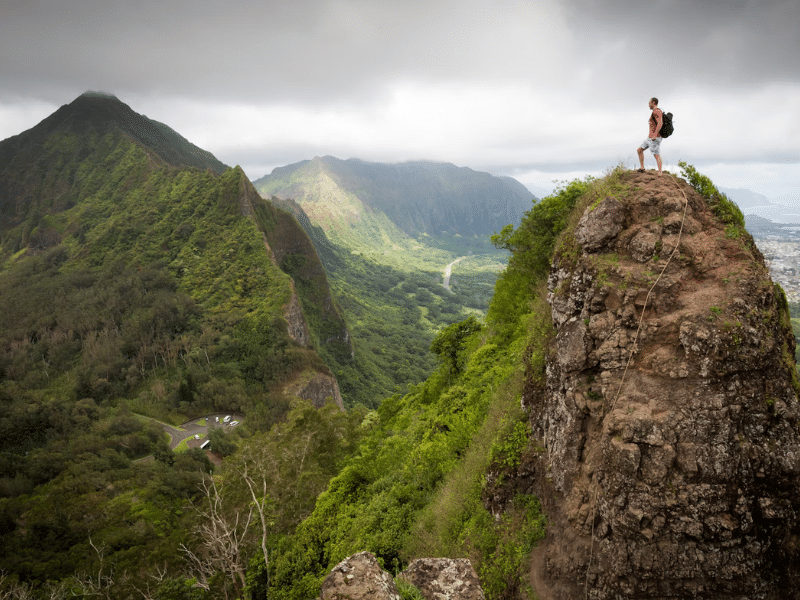Injury Prevention On The Trail: Exercises And Trips For Safer Hiking
We’ve been sending out plenty of motivation to hit the trails, so we thought it was about time we offered some tips for safer hiking as well.
Our research led us to ways to avoid muscle cramps, swollen feet, and twisted ankles. We picked out anything we could find to help with other hiking irritants, like sunburns, blisters, and bug bites as well.

We all know the point of going out hiking is to have as much fun as possible. Your passion for the outdoors should be stoked by high alpine trails – not torn to bits by unforeseen dangers. Of course, hiking is strenuous and the body feels it when you decide to challenge yourself.
To some extent, aches and pains are unavoidable. What we can do is mitigate your discomfort and reduce the likelihood of you picking up an injury from hiking. There are certainly too many fatal accidents each year.
Studies show that strength training (as little as two times a week) reduces your susceptibility to common injuries. Just be sure to set these around any aerobic training sessions so you have adequate time to recover.
Compound exercises can be especially beneficial. Here are a few specific exercises that train more than muscle at a time and are suited for the strains of hiking. We advise you to start with 3 sets of 12 and focus on your technique from the beginning:
- Double leg squats
- Deadlifts
- Lunges
- Side plank with rotation
- Downward facing dog to high plank
- Kneeling half stand-ups
- Single leg squat off step
- Crab walks

Injury Prevention
It’s important to come up with an adequate injury prevention strategy before you set off on the trail. Specific training is required to boost your strength and aerobic fitness. The last thing you want is to be fatigued early on and put off your adventure.
This specific kind of training requires a program that is enhanced by recovery and nutrition leading up your hike. Static stretching can lead to short term benefits by increasing your muscles’ flexibility. Listen to your body if you start to feel tightness or cramping in a particular area.
In addition to this you will always need to bear in mind the importance of hydration and nutrition. You want to perform to the limit of your ability when you’re taking on a tougher trail.
One thing to consider is whether you’ll be lugging a heavy backpack with you. This will increase the requirements of certain muscles. The higher level of endurance will be worsened by uneven terrain and steep inclines too. Be mindful of the impact this will have on your pelvis, back and neck.
Keeping this in mind, you might want to focus on exercises that work on your core and postural muscles. Core muscle endurance is essential when it comes to strain tolerance under the straps of a backpack.
Come up with a strength training regime, supported by responsible nutrition and recovery. Then stick to your plan and use compound exercises to strengthen your core muscles over time. Low impact exercises that cause cumulative fatigue are ideal training for what’s ahead of you on the trail.
You should also minimise your pack weight. Carry nothing more than the essentials if the journey looks to be longer and more arduous.
Here are a few other tips to help make light work of those longer days:

5. Dress Right And Check The Weather
Of course, you need to dress properly for a hike as much as you might want to take on a mountain in flip-flops. The wrong footwear will leave you staring at painfully wrinkled feet, spotted with blisters. Also, you need to consider the potential likelihood of sunburns and twisted ankles.
It does depend a little on your personal preferences. Some trail walkers like to wear workout gear. Others dress in synthetic clothes to stay dry when they sweat. Be mindful of the conditions and flora you might be up against. For example, short-sleeved shirts can expose your skin to poison ivy.
When it comes to checking the weather, you can rely on various apps or consult the internet. Rain leads to slippery leaves and rocks. So, you might want to choose footwear that stops you skittering down the trail like Bambi on ice. Lightning can be a common phenomenon in the mountains as well.

4. Don’t Be Afraid To Take A Break
We all know hiking is about the journey, right? So, don’t be scared to take time to rest during your hiking adventure. This will make the whole experience safer and more enjoyable.
It’s common for hikers to stop for a short break every kilometres or so. This can reduce the stressful exertion on your body and help to fend off muscle cramps. Also, the point is to be immersed in nature and not rushing through it like your only goal is the finish line.
Hiking sticks and Nordic walking poles can be useful to bring added safety to your hike. Assistance on the trail is not something to scoff at. Instead, embrace anything that enhances your appreciation for being outdoors, putting one foot in front of the other.

3. Know The Terrain
Research is crucial when it comes to hiking. You should learn about the environment you’re stepping into and stock up on guidebooks, online reading material and everything you can glean from Google Maps and satellite imagery.
As the old Scout Motto goes: ‘Always be prepared’. Gain as much insight as you can into the terrain ahead of you. Be aware of rivers, cliffs and crevasses, or the potential for unexpected natural occurrences, like landslides, or avalanches.

2. Stay Alert As You Hike
Now, we’re not asking that you scurry down the trail in camouflage, acting like you just enlisted in your own private special forces. What ‘stay alert’ means is simply that you watch your steps and observe your surroundings as you go.
A wrong step can send you stumbling into a gorge or plunging into a river. This depends on the difficulty of the route you’ve chosen, but it’s important to always be mindful that you’re stepping into a world you’re less familiar with.
Also, be mindful of your terrain as well. Wet rocks, peat bogs or clay soil can present you with unforeseen difficulties. Plant your feet with consideration and try not to drift off as you follow the trail.
1. Be Aware Of Wildlife
Finally, this tip might be more applicable to hikers in wilder parts of the world. For example, if you’re wandering the Lake District it’s rare to be on the wrong end of an animal ambush, incurring the wrath of an enraged red squirrel.
Bug bites and stings are familiar nuisances that can sap the fun from a hiking adventure. Just be conscious of the fact that you’ve entered the habitat of many different wild animals. It’s important you stay on your trail and consider safety measures dictated by local knowledge of the fauna.
Just remember that great hikes are always powered by the momentum of feeling good, which means always having your safety in mind. We hope these tips for safer hiking will enhance your next hiking experience.
Top Articles For Hiking Safety
21 Unusual Facts and Stats about Hiking in the UK
Hiking with Kids – Tips for Family-Friendly Outdoor Adventures




